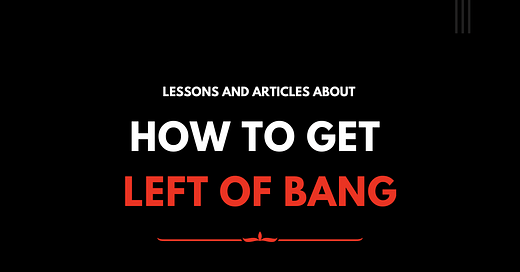Finding Valid Information – How Profiling Can Assist Census Operations
I was reading a blog post on the Marine Corps Gazette site last week (the link to the post is embedded in the image) that was written about the difficulty Marines have while gathering census data while deployed. The challenge is simple to understand because there can be a significant financial reward to local villagers who can successfully convince Marines that funding their cause is in our best interest.
“A single consistency I could draw from the book was that any Afghan in a position of power saw the international community as a source of income for their own patronage networks. Village chiefs, businessmen, and ambitious young men all told different stories to various aid agencies and organizations to direct the flow of aid money.” - Joe Davidoski (author of blog post) (blog link)
So how can understanding profiling and understanding human behavior help Marines who are responsible for gathering information from local villagers? The first step to detecting deception is being able to ask questions that force a person to dive deeper into their lie. I don’t intend to discuss the aspects of tactical questioning here, but using the same interview techniques employed by police officers on the street, can force the local villager to commit to their story or to concede the encounter and give up the lie. One such technique is to impose cognitive load (taxing and challenging their short term memory as they have to remember the details of the lie) on the person can cause them to begin to show indicators of deception. The more mental focus they have to use to remember the lie, the less likely they will be to control their body language.
Where profiling can assist this is identifying in the nervous cues that could be displayed. If a person is lying and they are being questioned about the details of their story, they could become nervous as their limbic system becomes focused to the potential threat of being discovered in the lie. This will result in the changes to that person’s Kinesic and Biometric cues as their body prepares for the flight or fight response associated with perceived threats.
Of course we aren’t going to make any decision based off of just one nonverbal cue, but by building them into clusters that leads me to the same conclusion, we will increase the likelihood of making accurate assessments. If the person begins displaying cues from the uncomfortable cluster in this context, it may indicate that the person is being deceptive or at least confirm they are not comfortable answering these questions. You can also observe their facial expressions and see if they let slip any micro-expressions that don’t fit the baseline or the scenario.
As a means of lie detection, there are a lot of different viewpoints on how to successfully uncover liars. I don’t pretend to think this is an “absolute” method to uncover every liar that you interact with, but understanding the basic ties between cognitive load and the likelihood of Kinesic slips can begin to assist the Marine on patrol. With an approach that doesn’t require any technology and just employs basic techniques of questioning and understanding human behavior, Marines can begin to separate out the honest from the lying.



